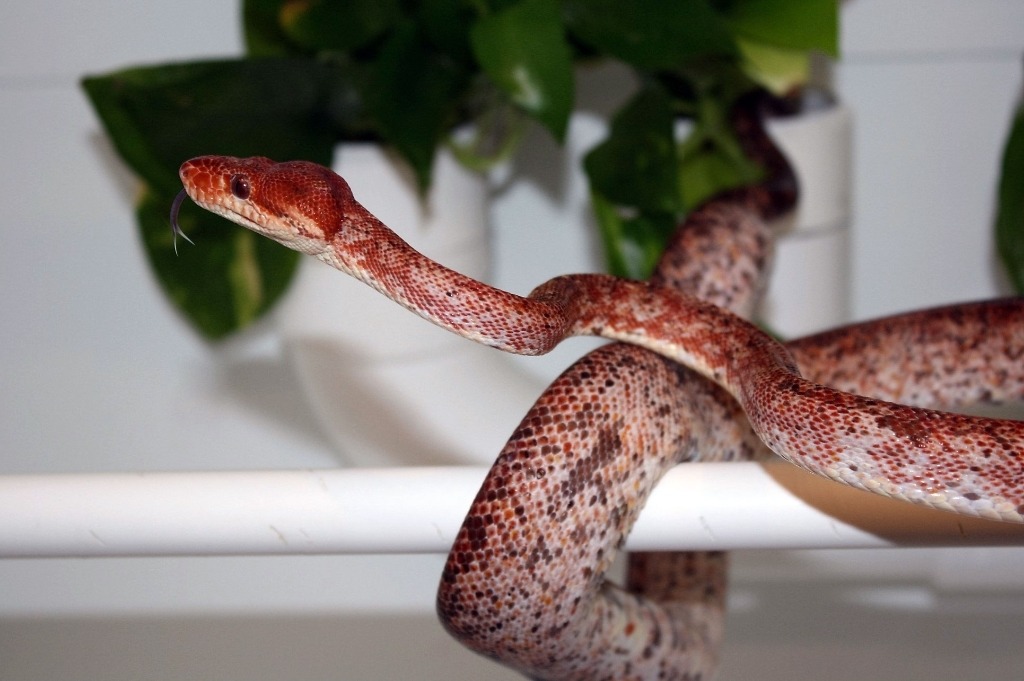The Amazon Tree Boa (Corallus hortulanus) is a non-venomous reptile species belonging to the family Boidae. It is known for its arboreal nature and beautiful color patterns. Below is the requested information about the Amazon Tree Boa:
Synonym
- Corallus hortulanus (LINNAEUS, 1758)
Common Names
The Amazon Tree Boa is commonly known by the following names:
- Amazon Tree Boa
- Garden Tree Boa
- Macabrel
Natural Distribution
The Amazon Tree Boa is native to the tropical rainforests of Central and South America. It can be found in various countries, including Brazil, Peru, Ecuador, Colombia, Venezuela, and Guyana. Within its range, it inhabits the canopy and understory of forests, utilizing trees and vegetation as its primary habitat.
Conservation Status
- CITES Appendix II
- Least Concern (LC)
The IUCN Red List of Threatened Species lists Corallus hortulanus as Least Concern. However, it is important to note that habitat loss due to deforestation and the pet trade can impact local populations.
Characteristics
Size: The Amazon Tree Boa is a medium-sized snake, with adult individuals typically reaching lengths of 4 to 6 feet (1.2 to 1.8 meters).
Coloration: They exhibit a wide range of color patterns and morphs, including various shades of green, brown, or gray, often with dark markings or stripes. This allows them to blend into the vegetation and trees of their habitat.
Body Shape: They have a slender and elongated body, adapted for climbing and maneuvering in trees.
Scales: The scales of the Amazon Tree Boa are smooth and glossy.
Head and Eyes: They have a relatively large head with distinct eyes and a rounded snout.
Amazon tree boas are highly variable in terms of color phase and pattern with no two animals looking alike. Locality types have some similarities in pattern (Henderson 1997)1. Animals can often be red, orange, yellow, brown or a combination of colors.
Because Amazon’s are so variable in appearance, they are very popular among hobbyists.
Amazon Tree Boa Gallery











References
- Garden Tree Boa, Corallus hortulanus, he IUCN Red List of Threatened Species (accessed online 2023)
- McDiarmid, R. W., Campbell, J. A., & Touré, T. A. (1999). Snake Species of the World: A Taxonomic and Geographic Reference. Vol. 1. Herpetologists’ League.
- Bartlett, R. D., & Bartlett, P. (2011). Amazon Tree Boa: Corallus hortulanus. In: Snakes of North America: Eastern and Central Regions. University of Texas Press.
- Corallus hortulanus. (2021). The Reptile Database. Retrieved from https://reptile-database.reptarium.cz/species?genus=Corallus&species=hortulanus
- A Taxonomic Review of the Corallus hortulanus Complex of Neotropical Tree Boas. Caribbean Journal of Science, Vol. 33, No. 3-4, 198-221, 1997 (Henderson 1997)
- Corallus hortulanus (LINNAEUS, 1758) – The Reptile Database. (Accessed Online, 2017)
- Convention on International Trade in Endangered Species of Wild Fauna and Flora (CITES) – Appendices I, II and III
#DarrenHamillReptiles #AmazonTreeBoas
